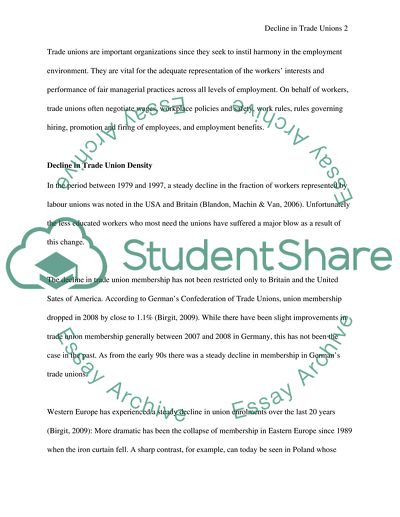Cite this document
(Decline in Trade Union Density since 1979 Research Paper, n.d.)
Decline in Trade Union Density since 1979 Research Paper. Retrieved from https://studentshare.org/politics/1729229-trade-union-density-has-undergone-significant-decline-since-1979
Decline in Trade Union Density since 1979 Research Paper. Retrieved from https://studentshare.org/politics/1729229-trade-union-density-has-undergone-significant-decline-since-1979
(Decline in Trade Union Density since 1979 Research Paper)
Decline in Trade Union Density since 1979 Research Paper. https://studentshare.org/politics/1729229-trade-union-density-has-undergone-significant-decline-since-1979.
Decline in Trade Union Density since 1979 Research Paper. https://studentshare.org/politics/1729229-trade-union-density-has-undergone-significant-decline-since-1979.
“Decline in Trade Union Density since 1979 Research Paper”, n.d. https://studentshare.org/politics/1729229-trade-union-density-has-undergone-significant-decline-since-1979.


